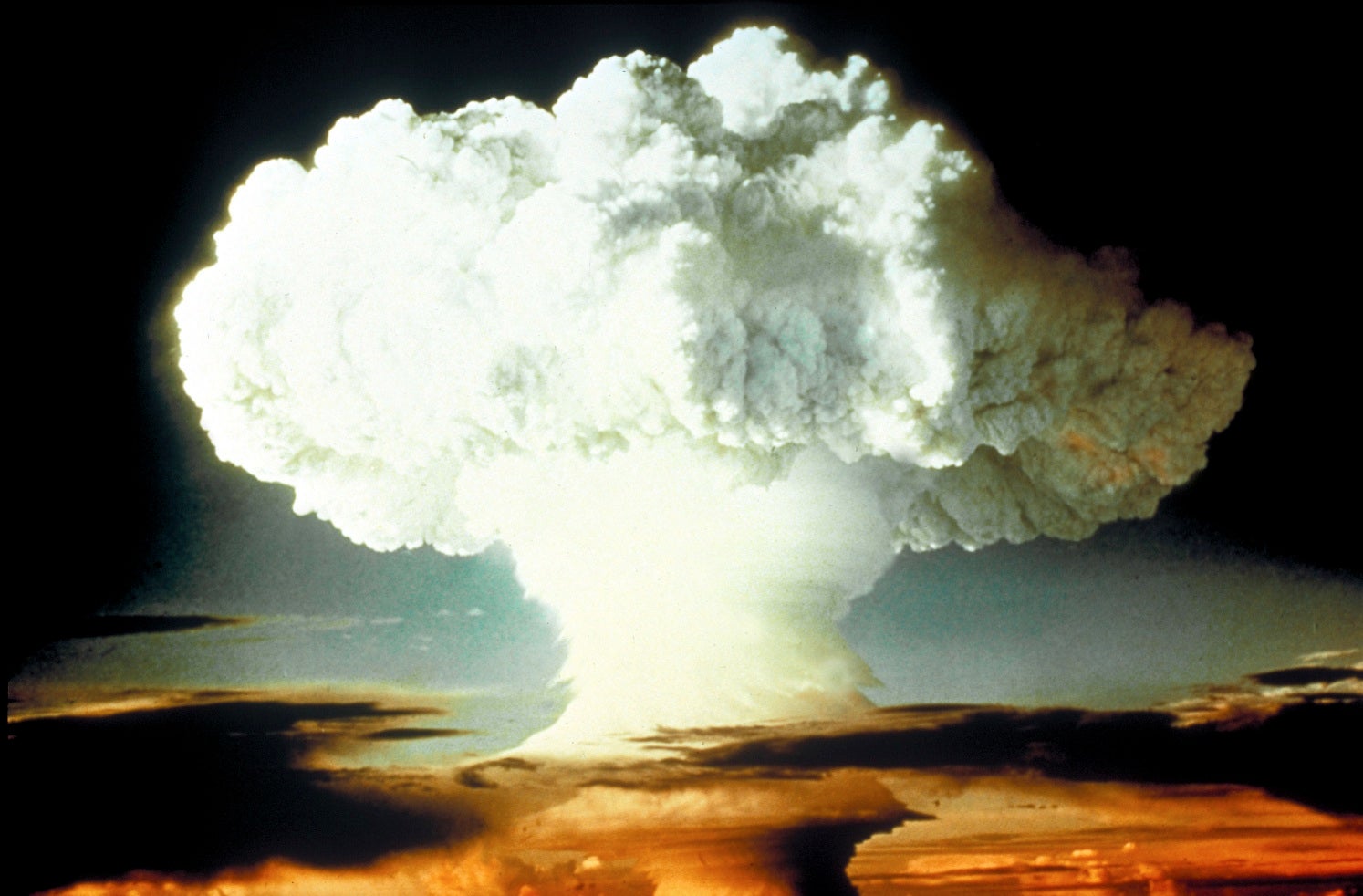What is the Doomsday Clock?
Time shows how near to annihilation we are from nuclear weapons, climate change, and other threats

Your support helps us to tell the story
From reproductive rights to climate change to Big Tech, The Independent is on the ground when the story is developing. Whether it's investigating the financials of Elon Musk's pro-Trump PAC or producing our latest documentary, 'The A Word', which shines a light on the American women fighting for reproductive rights, we know how important it is to parse out the facts from the messaging.
At such a critical moment in US history, we need reporters on the ground. Your donation allows us to keep sending journalists to speak to both sides of the story.
The Independent is trusted by Americans across the entire political spectrum. And unlike many other quality news outlets, we choose not to lock Americans out of our reporting and analysis with paywalls. We believe quality journalism should be available to everyone, paid for by those who can afford it.
Your support makes all the difference.The Doomsday Clock will get its 2024 update on Tuesday, 23 January.
Last year, the Clock was set at 90 seconds to midnight, the closest it has ever been.
The dramatic metaphor, established in 1947 by some of the world’s leading scientists, symbolises just how close humanity is to catastrophe from man-made threats including nuclear war, the climate crisis and artificial intelligence.
Midnight represents that annihilation. And so the keepers of the clock move its time forward and back, once a year, as a way of warning humanity of the perils it faces.
At 90 seconds away in 2023, this was closer to midnight than even the high-wire days of nuclear proliferation in the 1950s. In the early Nineties, the clock moved away from danger, and was set at 17 minutes from midnight in 1991 where it remained for four years.
Where did the Doomsday Clock come from?
The clock was first established in 1947, by members of the Bulletin of the Atomic Scientists. While it does publish a journal, the Bulletin is really a collection of concerned experts, formed at the beginning of the nuclear age and including many of the world’s most famous scientists, such as Albert Einstein and J Robert Oppenheimer.
The clock was dreamt up as part of a design for the cover of the magazine, and drawn by artist Martyl Langsdorf who had worked on the Manhattan Project to create the atomic bomb. The first announcement was for seven minutes to midnight, though Langsdorf said that time was chosen more for aesthetics than any reflection of danger, because it “looked good to my eye”.
Since then, the time has moved annually. The changes were initially decided by the editor, Eugene Rabinowitch – but since 1973, a board of experts have made the decision in collaboration, publishing a long justification and warning at the same time.
The metaphor of the Doomsday Clock has infiltrated popular culture from the comic book and TV series,Watchmen, to Linkin Park’s album Minutes to Midnight.
What does the Doomsday Clock represent?
It is intended as a symbol of how much danger humanity finds itself in. In so doing, it aims to capture threats posed to humanity.
While it was created in response to the danger of nuclear war, the clock has changed over time to adjust to whatever form those threats take.
Along with nuclear dangers, in recent decades it has also incorporated the threats posed by the climate crisis, artificial intelligence and pandemics.
Where will it go from here?
Nobody knows. When the clock’s new time is announced each year, scientists are eager to stress that it is meant as a call to action and a warning to politicians that danger is coming but it is within their power to do something about it.The Bulletin is also keen to stress that the clock is not meant as a prediction of the future but an indication of where we are now. On its website, it likens itself to a “doctor making a diagnosis”.
“We look at data, as physicians look at lab tests and x-rays, and also take harder-to-quantify factors into account, as physicians do when talking with patients and family members,” according to the Bulletin’s explanation.
“We consider as many symptoms, measurements, and circumstances as we can. Then we come to a judgment that sums up what could happen if leaders and citizens don’t take action to treat the conditions.”
Join our commenting forum
Join thought-provoking conversations, follow other Independent readers and see their replies
Comments